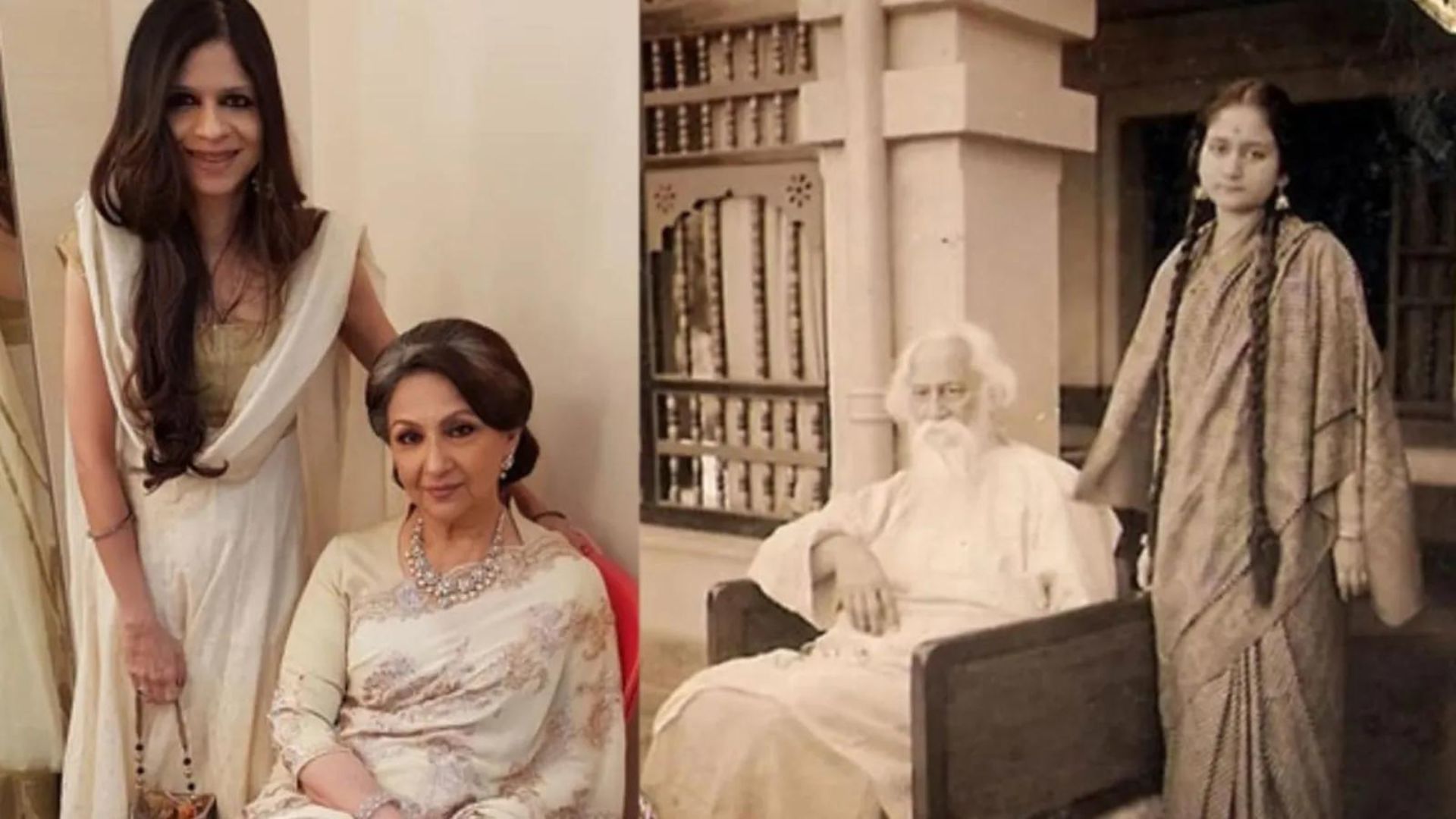Rabindranath Tagore and Sharmila Tagore Relationship
Rabindranath Tagore and Sharmila Tagore Relationship – In the realm of Indian cinema and literature, the intertwining threads of heritage and talent often weave captivating narratives. Sharmila Tagore, an iconic figure in Hindi and Bengali films, and Rabindranath Tagore, the Nobel Prize-winning poet and polymath, stand as pillars of cultural influence. As we delve into the connections that bind them, this exploration unfolds the familial ties and cultural legacies that have shaped the artistic landscape of India. Through the lens of their relationships and contributions, we embark on a journey that illuminates the rich tapestry of India’s cinematic and literary heritage.
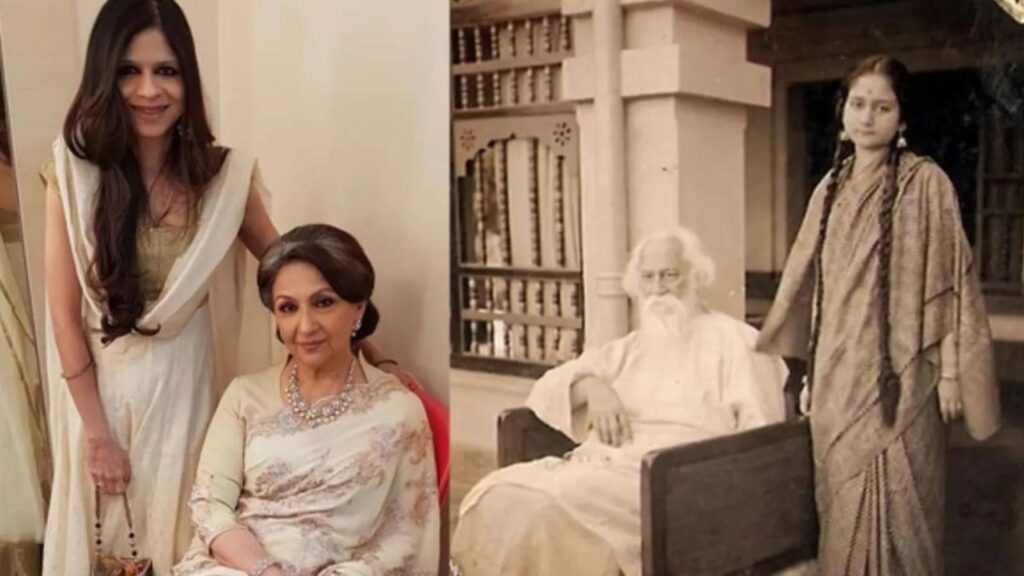
Who is Rabindranath Tagore?
Rabindranath Tagore, born on 7 May 1861, was a Bengali polymath whose influence extended across various domains during the Bengal Renaissance. A poet, writer, playwright, composer, philosopher, social reformer, educationist, and painter, Tagore reshaped Bengali literature and music, along with Indian art, through Contextual Modernism in the late 19th and early 20th centuries.
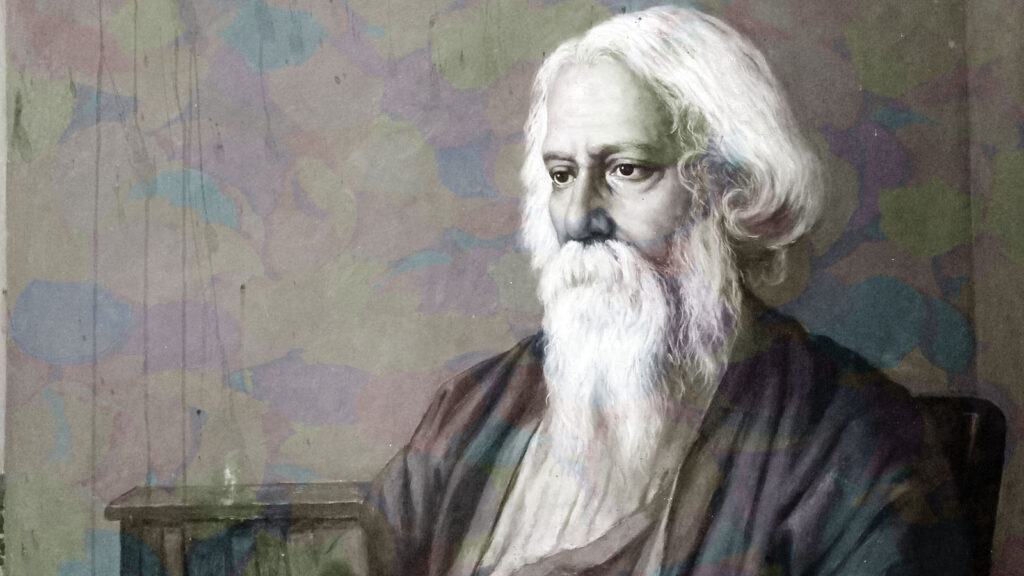
Renowned for his profoundly sensitive poetry, particularly in “Gitanjali,” Tagore made history in 1913 by becoming the first non-European and lyricist to win the Nobel Prize in Literature. He earned sobriquets such as Gurudeb, Kobiguru, and Biswokobi, reflecting his impact as “the Bard of Bengal.”
Tagore’s early exposure to literature began as an eight-year-old, and by sixteen, he released his first substantial poems under the pseudonym Bhānusiṃha. As a humanist and critic of nationalism, he denounced the British Raj and advocated for India’s independence. His extensive contributions included paintings, texts, and over two thousand songs, solidifying his legacy as a key figure in the Bengal Renaissance and the founder of Visva-Bharati University.
Tagore modernized Bengali art by breaking away from rigid classical forms and linguistic constraints. His notable works include “Gitanjali,” “Gora,” and “Ghare-Baire.” Two nations, India and Bangladesh, adopted his compositions as their national anthems – “Jana Gana Mana” and “Amar Shonar Bangla,” respectively. Additionally, the Sri Lankan national anthem drew inspiration from his work.
Who is Sharmila Tagore?
Sharmila Tagore, born on 8 December 1944, is a celebrated Indian actress known for her remarkable contributions to both Hindi and Bengali films. Hailing from the influential Tagore family, a key figure during the Bengali Renaissance, Sharmila made her acting debut at the age of 14 in Satyajit Ray’s acclaimed Bengali epic drama, “The World of Apu” (1959). This marked the beginning of a stellar career in Bengali cinema, with collaborations with Ray on several other notable films.
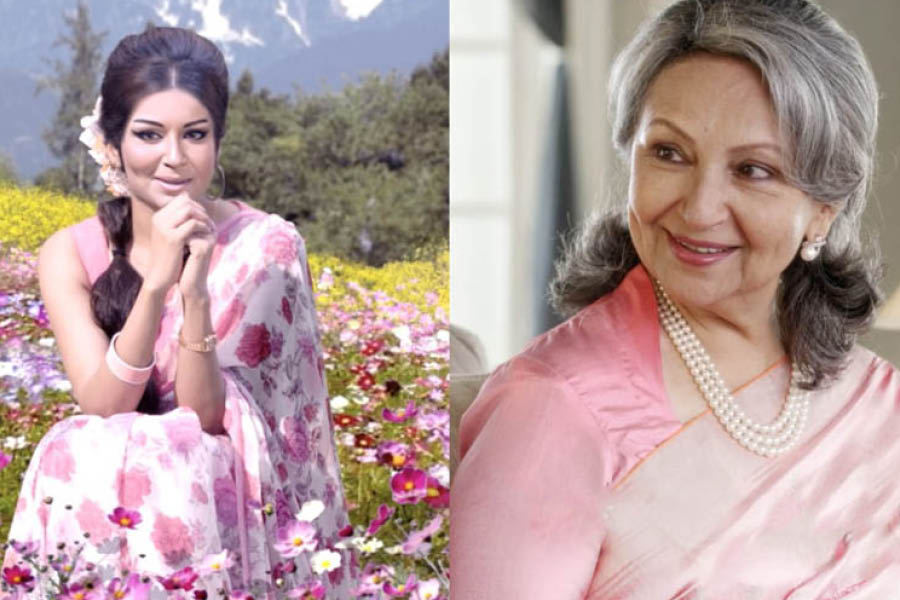
Her foray into Hindi films began with Shakti Samanta’s “Kashmir Ki Kali” (1964), propelling her to stardom in the Hindi film industry. Sharmila established herself as a leading actress with memorable performances in films like “Waqt” (1965), “Aradhana” (1969), “Amar Prem” (1972), and “Chupke Chupke” (1975). Her portrayal in “Aradhana” earned her the Filmfare Award for Best Actress, while “Mausam” (1975) brought her the National Film Award for Best Actress.
Despite intermittent appearances in the following decades, Sharmila left an indelible mark in Hindi cinema. Noteworthy roles include Mira Nair’s “Mississippi Masala” (1991) and Goutam Ghose’s “Abar Aranye” (2002), where she won the National Film Award for Best Supporting Actress. After a hiatus of 13 years, she made a triumphant return with the drama “Gulmohar” in 2023.
Beyond her acting prowess, Sharmila Tagore served as the chairperson of the Central Board of Film Certification from October 2004 to March 2011. In December 2005, she was appointed as a UNICEF Goodwill Ambassador, showcasing her commitment to social causes.
Rabindranath Tagore & Sharmila Tagore Relationship?
The link between Sharmila Tagore and Rabindranath Tagore adds an intriguing layer to their legacies. Sharmila’s father was the grandson of Rabindranath Tagore’s first cousin’s grandson, creating a familial connection. Moreover, her maternal grandmother was the granddaughter of Rabindranath’s brother, further intertwining their family trees.
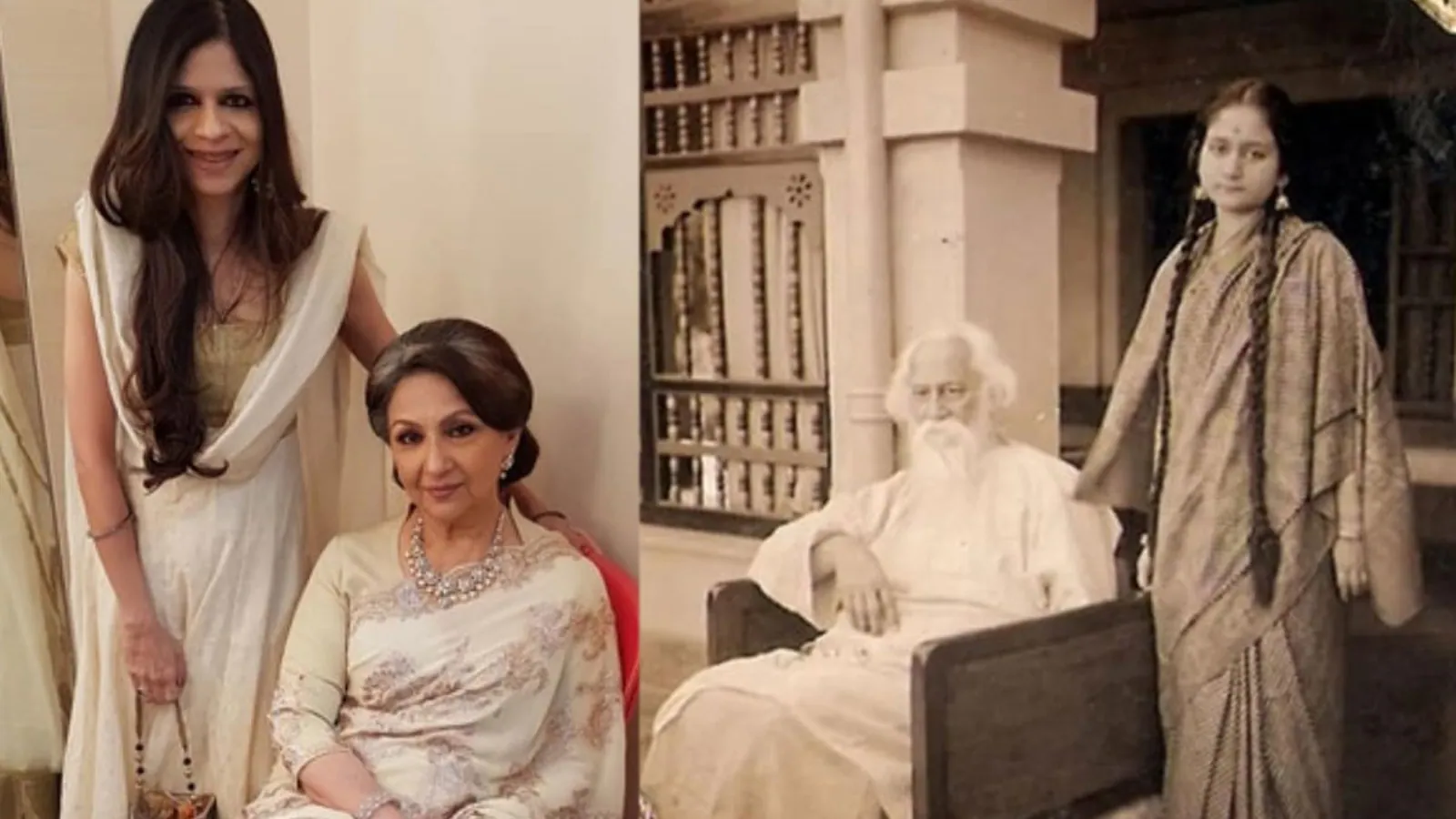
This familial connection, while not directly influencing their professional paths, highlights the intricate web of relationships in India’s cultural and artistic landscape. The Tagore legacy, with its deep roots in Bengal’s cultural heritage, continues to resonate through the generations.
Conclusion:
In conclusion, Sharmila Tagore and Rabindranath Tagore stand as influential figures in Indian cinema and literature, respectively. Sharmila’s cinematic journey reflects a blend of talent, versatility, and resilience, while Rabindranath’s contributions encompass literature, music, art, and social reform. Their familial connection adds a personal touch to their shared cultural heritage, contributing to the rich tapestry of India’s artistic legacy.
Also Read:
FAQ:
Is Sharmila Tagore relative of Rabindranath Tagore?
Yes, Sharmila Tagore is indeed related to Rabindranath Tagore. Their connection is more direct through Sharmila’s mother. Her maternal grandmother, Latika Barua (née Tagore), was the granddaughter of Rabindranath Tagore’s brother, Dwijendranath Tagore. This familial link strengthens their relationship.
How is Saif Ali Khan related to Rabindranath Tagore?
Saif Ali Khan, coming from a royal family, has an interesting connection not only to Rabindranath Tagore but also to the renowned poet Mirza Ghalib. Sharmila Tagore, Saif’s mother, belongs to the bloodline of the celebrated Nobel laureate Rabindranath Tagore.
Is Sara Ali Khan related to Rabindranath Tagore?
Yes, Sara Ali Khan shares a familial connection with Rabindranath Tagore through her grandmother, Sharmila Tagore. Sharmila is the great-grandniece of Rabindranath Tagore, the Nobel Prize-winning poet and writer. Therefore, Sara Ali Khan is the great-granddaughter of this eminent literary figure. The rich cultural heritage passes down through generations in their family.
